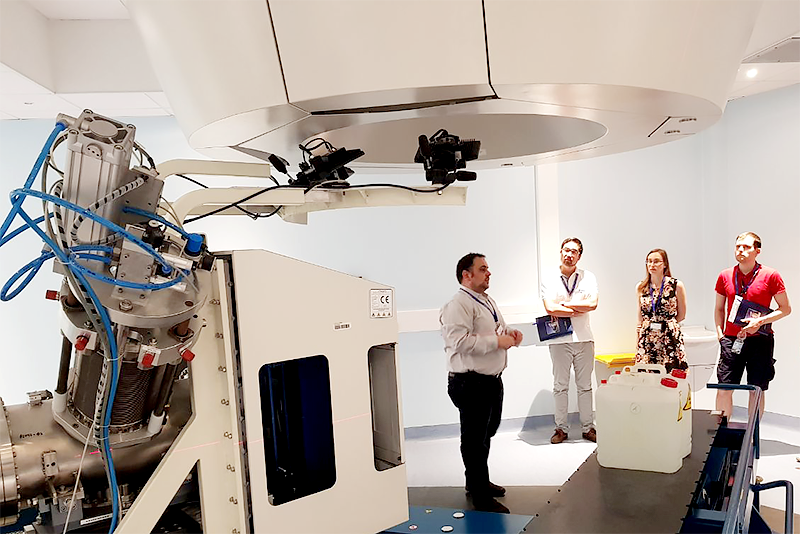 International School on Medical Accelerators
International School on Medical Accelerators
by Magdalena Klimontowska (University of Liverpool)

Participants at the OMA School on Medical Accelerators (Image credit: CNAO)
Cancer is one of the leading causes of morbidity and mortality worldwide. The number of new cases is expected to rise by about 70% over the next 2 decades (WHO, Cancer Fact Sheet, February 2017).
Although significant progress has been made in the use of particle beams for cancer treatment, extensive research is still needed to maximise healthcare benefits and to assure the best possible cancer treatment for patients.
An international school took place at CNAO (Centro Nazionale di Adroterapia Oncologica) in Pavia, Italy in June 2017, gathering 75 delegates from around the world, to discuss the optimization of medical accelerators. The event brought together researchers and students working at the interface between physics and life sciences. Lectures given by renowned scientists covered areas such as beam physics, radiotherapy, medical applications of accelerators and treatment processes, as well as challenges related to beam diagnostics, patient imaging and motion detection. In addition to the lectures there were also study groups, a poster session and a dedicated industry session. The school also featured a tour of the CNAO synchrotron and treatment rooms, guided by local experts, Dr. Monica Necchi and Sergio Gioia who explained the technical details of the facility and the patient treatment process.

Visit of the accelerator facilities at CNAO (Image credit: CNAO)
The event was organized by the Optimization of Medical Accelerators project (OMA). OMA is a European Training Network funded by Horizon 2020 Marie Skłodowska-Curie Actions and coordinated by the University of Liverpool.
Professor Carsten P. Welsch, Head of the University of Liverpool’s Department of Physics, is coordinating the OMA network. He says: ”A growing body of clinical evidence shows that there is great potential for proton and ion treatment, particularly for treatment of cancers in children and where tumours are close to vital organs. The goal now is to maximize the therapeutic efficiency while reducing as much as possible the damage to surrounding tissue. This will come through improvements in tumour imaging, beam quality and shaping and a better understanding of the dose and its impact on both, the body and the tumour.”
OMA is a unique collaboration of universities, research institutes, hadron therapy facilities and industry partners to address the challenges in treatment facility design and optimization, numerical simulations for the development of advanced treatment schemes, and in beam imaging and treatment monitoring. The network is built around 15 early stage researchers working on dedicated projects and consists of an international consortium of more than 35 partner organisations. It provides a wide training programme comprising schools, topical workshops and an international conference. Professor Welsch continues: “OMA is a major European initiative in the field of medical applications of accelerators. We offer an interdisciplinary training programme to early stage researchers and promote collaboration between accelerator scientists, oncologists and control system experts to assure the best possible cancer care for patients.”
The school in Italy created an important opportunity for young researchers to gain from the expertise of renowned scientists, and started a series of OMA training events with a School on Monte Carlo Simulations for Medical Applications coming up as the next one, in November 2017.The brand-new brochure of the OMA project was distributed to all School participants. It was launched at the industrial exhibition of IPAC’17 and is now available for download. It presents the individual backgrounds and work done by each Fellow and provides details about the project’s broad research programme, training, outreach and partner institutions.
Read more about the event here